So, you’ve got your online business up and running.
Great.
With more than 55% of people searching online for reviews and recommendations before making a purchase, and 47% visiting the company website, we can assume that you’ve made a pretty good choice.
It’s all set up and you can see some traffic coming in, your visitors are browsing through your offers and occasionally deciding to make a purchase.
All is going well until at the end of the month you realize that out of 5,000 people visiting your website, only 12 of them clicked the magic “Buy” button and became your customers.
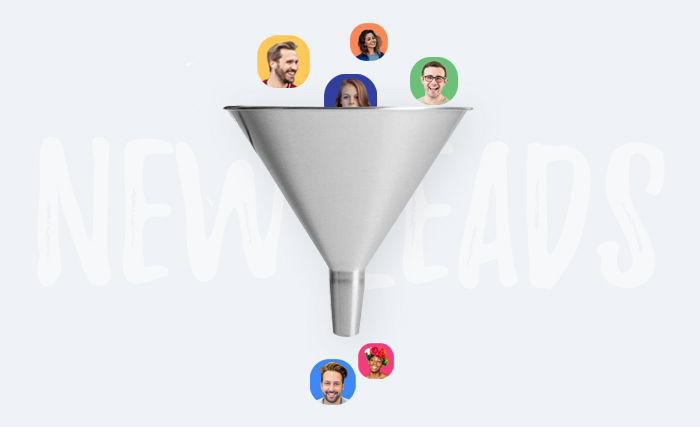
Damn… that’s not impressive. And by the way…
What about the rest?
Well, it’s about time you start thinking about them as people who actually want to buy something from you … it’s just that they’re not quite ready yet.
The good news is that there is a way to reach out to them and show them that your products are actually awesome and they should buy them.
The bad news is that there are thousands of other businesses trying to do the same thing.
Unless you try something new and fresh.
Take chatbots, for instance.
They might seem innocent just hanging out at the bottom of a site, but in fact, they are one of the best tools to grab customers’ attention and engage them with an interesting conversation.
Chatbots can provide your website’s visitors with more product details, give a website tour, or remind about items abandoned in a shopping cart.
They can become yet another gentle nudge for customers to buy your product. Just like CTA buttons, but waaaay more effective.
To support our claims (hey, you don’t have to believe us, but trust the data!), we will show you how:
- Nikola from Brosix tripled her traffic with content marketing
- Ameeq from MailMunch generated 400% more leads with an email course
- Boot Camp Digital achieved 97% email completion rate with their Digital IQ Test
- Ahmad from BenguOnline generated 56.29% lead conversion from a pop-up
… and we’ll also reveal step by step how to replicate the techniques that worked for them.
So if you are in for winning big with your online store this year, fasten your seat belts and hop on board!
The Anatomy of a Lead Generation Strategy
Before you design any kind of strategy, let alone an effective one, you have to understand the building blocks you are about to use.
Let’s dive right into it and learn the fundamentals of the lead generation strategy starting with…
To put it simply, a lead is a person who has shown some kind of interest in your brand and what you have to offer. It’s someone who can potentially decide to make a purchase and become a paying customer. But he or she doesn’t have to. 
And here’s the thing worth remembering: a lead is not a prospect (despite the common belief).
What’s the difference between the two?
That’s simple: A lead is an unqualified contact, while a prospect is someone who already fits our chosen criteria and is ready to be “moved” down the sales funnel.
Now that we have this sorted, it’s time to clarify…
Why Does Your Business Need Leads?
If leads are people who might be potentially interested in your offer, it is obvious that gathering their contact data (such as email address) will come in handy when you want to reach out and make an offer.
Ideally, the leads you acquire are highly qualified, meaning they are familiar with your products and are on the verge of either making a purchase or learning more about them.
However, the truth is that no one can guarantee that your chosen channel will start bringing in the right type of leads who are ready to buy. Actually, that’s the reason why you need to test nearly every lead generation channel to find the one that fits your business model.
The more leads you generate, the more chances for sales and conversions you’ll have!
What Is Lead Generation?
Your business is profitable only when your customers decide to make your day better and click the magic “Buy” or button on your website.
So what about all those people who decide to check out your business … but never purchase anything?
For one thing, they definitely showed some interest in what you are offering by visiting your website (unless they landed there by accident, which happens a lot, too) so we can safely assume that they are quite likely to be interested in your offer in the future too, right?
But tracking their data and reaching out to them with your new offers manually would be:
- time-consuming
- technically illegal
This is where the idea of lead generation comes in.
Lead generation is essentially taking such a strong interest in your prospects that they eventually get in touch with you – and maybe even buy your products or services.
It’s a whole process that starts from initial contact and (hopefully) ends with them leaving you their contact data, which you can then use to convert them.
Dive deeper:
- How to Generate Leads Online for Every Business
- 8 Ways to Increase Your Ecommerce Conversion Rate with Live Chat
During the course of the lead generation process, you need to create a so-called lead funnel.
What Does a Lead Funnel Look Like?
There is no one-size-fits-all answer to this, but a commonly used lead funnel looks something like this:
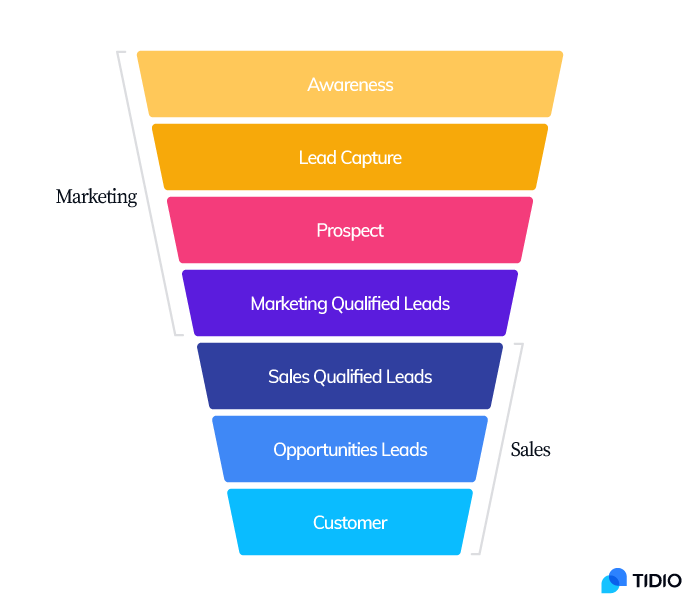
You can adjust it however you like, depending on the kind of business you run.
Essentially, lead funnels are a part of the bigger sales funnel, which is the journey your leads go on before they become paying customers.
How to Bring Traffic to Your Website
Alright, it’s clear why lead generation is crucial for your business. It’s now time to move things forward and start designing a killer lead generation for your small business.
It all starts with getting their contact data.
Of course, in order to get anyone’s contact data, you have to first bring them to your site. As such, the first step is to focus on filtering those channels and activities that could help you drive a solid flow of potential leads.
How?
Out of the numerous ways of attracting people to your website, we’ve outlined the most important ones below.
SEO (Organic Traffic)
Getting leads from SEO is only possible for those businesses that have already attained good visibility in Google. Organic traffic can’t be done overnight as content optimization for both on-site and off-site ranking factors takes tons of time and resources. However, once a website establishes authority and ranks well on the biggest search engines, it can generate a consistent flow of high-quality leads with minimal ongoing investment.
Here’s what Nikola Baldikov from Brosix said about implementing best content marketing and SEO strategies to generate more organic traffic, especially for business that is just getting started:
One key strategy is making keyword research and writing on topics that people are searching for, as well as creating outstanding content that covers how our software will help them as our clients.
Nikola Baldikov
It is usually not advisable to focus on expanding your content by simply rewriting other brands’ content as in this way you don’t bring anything new or valuable which has been closely produced around your company’s experience and therefore your clients.
It tripled our traffic.
Digital Marketing Manager @ Brosix Instant Messenger
In order to use SEO to your advantage, you have to obviously pay close attention to both: on-page SEO and off-page SEO.
Why?
Because highly optimized websites outrank their competitors in search. The higher you rank, the more visible you are to the right people. In other words, SEO drives more traffic, and this increase in traffic means an increased chance of generating more leads.
Case Study: On-page SEO
On-page SEO is the information on each individual page on your website. This includes:
- Content – This can consist of blog pages, FAQs, resource pages and reviews
- Internal links
- Title tags
- Meta descriptions
There are various on-page SEO tools that you can use to monitor and improve the performance of your website.
If you are not convinced whether on-page SEO matters, just take a look at the astounding results achieved by implementing a few technical SEO fixes for their eCommerce client shared by Jonas Sickler from Terakeet.
A massive national retailer came to Terakeet because their website was losing organic traffic. They projected that their traffic would be down nearly 10% YOY in 2019.
Jonas Sickler
However, we were able to turn around the slide and get them back to baseline within 8 weeks after our technical recommendations were implemented.
SEO Manager @ Terakeet.
Here’s what they did:
- Optimize meta-elements
- Add on-page copy that includes relevant and keyword-rich text
- Add image alt text
Here are some of the KPIs:
- Fixed 33,000 duplicate pages
- Reduced page load time by 34%
- Increased total ranking keywords by 34,000
- Increased traffic by 1 million visits over projected 2019 target
Target page metrics:
- 547% increase in ranking keywords
- 589% increase in impressions
- 124% increase in clicks
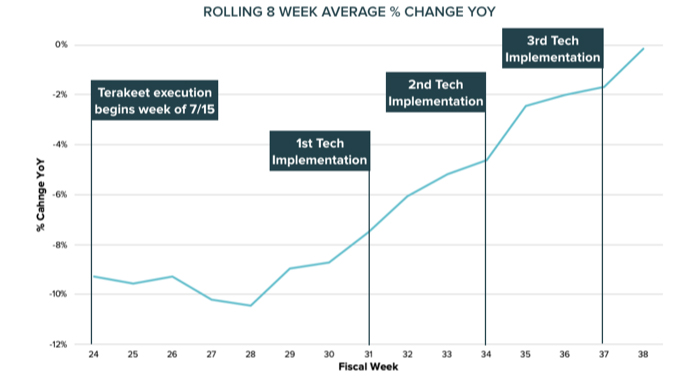
That’s pretty impressive for just “a few technical SEO fixes”, isn’t it?
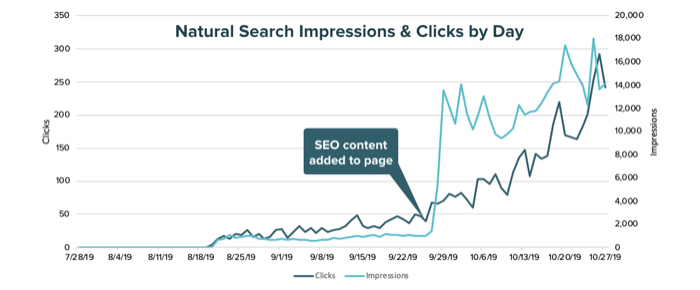
How Do You Make an Off-Page SEO?
There are several practices that fall under the umbrella of off-page SEO. I won’t go too much into details, but it’s important to give you an idea of the most impactful one: link building.
No surprise here, it is also the most time-consuming activity as it might take ages to build even 20 high-quality links.
Earning links continues to get more and more difficult which is why it’s so important to reinforce what Nikola Baldikov from Brosix mentioned earlier – the need to create outstanding content as part of your SEO efforts.
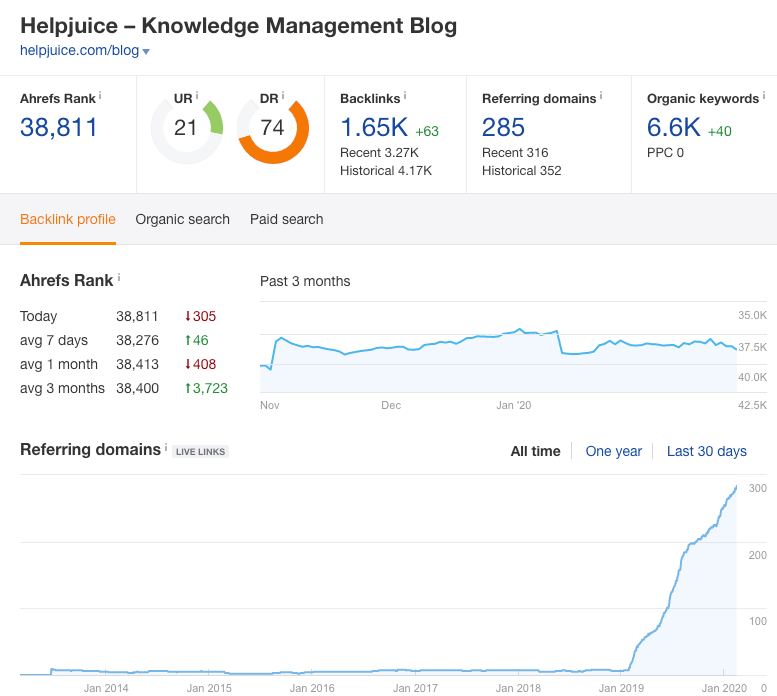
It’s crucial to stop looking at content marketing and SEO as two separate entities and instead think of them as two sides of the same coin that work in tandem to potentially improve your online marketing goals.
By creating a content marketing strategy that focuses on producing authoritative content as well as how to turn that content into a “linkable” asset (for example with expert quotes, infographics, etc.), you’ll find it easier to generate inbound links.
It really makes sense to rely on this channel only for those companies that are receiving a steady flow of organic traffic on a monthly basis.
There are several ways to acquire backlinks to your website: guest posting, “stealing” competitors’ backlinks or discovering unlinked brand’s mentions and conducting an outreach campaign.
And if you’re lucky enough to be among companies that are getting organic visitors then here’s what you need to do start capturing more leads:
- Uncover a list of pages that are getting the most organic visitors.
- Go to Google Analytics and find the pages that are receiving the biggest portion of your organic traffic. You can find a list of pages by navigating to the “Channels’ report that is allocated under the “Acquisition” section. After this, select “Organic Search” and in this report click on “Landing page”. Voila, here’s a list of pages that are bringing onboard organic visitors:
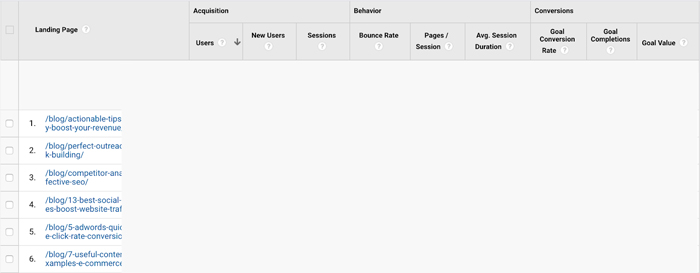
- Start capturing leads on pages that are bringing you organic traffic.
- Once you have a list of pages, it’s time to think over how exactly you’re going to capture leads on them. Normally, marketers prefer to use lead magnets. If you’re not familiar with what a lead magnet is then it’s nearly anything that can be considered by a potential lead as something good enough to exchange it for his or her email. Among the most popular lead magnets will be newsletters, ebooks, lead generation chatbots, courses, a free checklist, templates, and even consultations. We’ll return to lead magnets later in this article.
On a general note, it’s never a bad idea to check what kind of lead magnets your rivals are using on the most visible pages in Google SERPs.
To do this, you can use a tool like Ahrefs or SE Ranking and do a bit of quick research. For instance, on the screenshot below you’ll see what kind of pages on the rightinbox.com site receives the biggest number of organic visitors:
And here’s a lead magnet that they’re using to capture users:
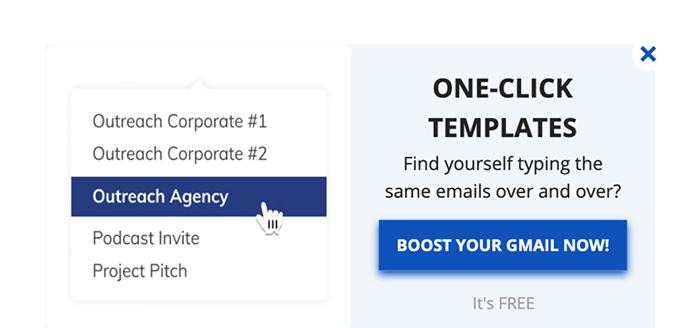
Doesn’t seem so complicated, does it?
Dive deeper:
- How to Sell Online with a Low-Traffic Website
- Traffic, but No Sales? 6 Steps to Increase Your Ecommerce Sales
Paid search
It depends on your industry, but paid channels might help you bring on board some ready-to-buy leads. Although it’s good to take into consideration the average cost per lead within your niche that might be absolutely NOT within your current budget.
If your business is related to IT & Services, the average price per lead goes through the roof at almost 400 USD per lead. For digital marketing agencies, the cost per lead is around 200 USD, whereas, for educational business, such as Bid4Papers, it’s only 60 USD. All these data point out that attracting leads through paid channels requires not only some specific skills but also a solid budget.
Among the easiest ways to run an ad campaign to test the waters is capturing those users who visited your site but haven’t converted to leads yet. Personally, I’m a big fan of Facebook remarketing since it doesn’t require special skills, and it allows you to create audiences by filtering out some particular pages.
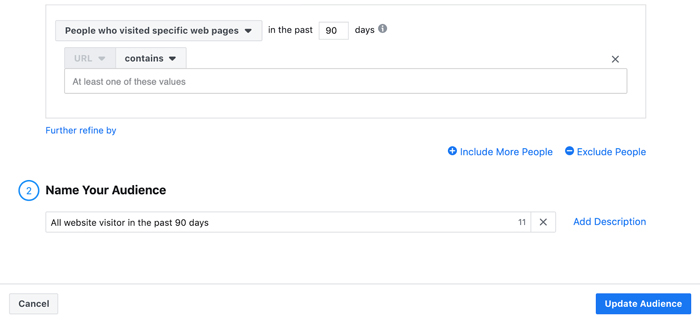
For instance, if you have a few blog posts about content marketing, you could run an ad campaign that only targets those users who read this content.
Also, don’t forget that to ensure that your leads will leave you their emails, you need to create a landing page that includes a clear call-to-action.
Here’s an example of a lead generation landing page that was specifically created to capture leads from Facebook by Biteable company:
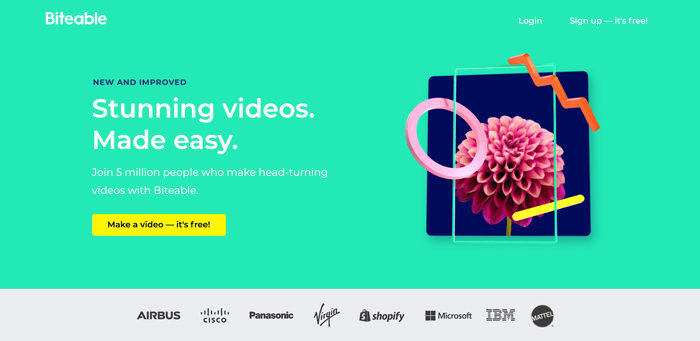
Social media
Social media channels allow you to generate FREE traffic that results in leads within a few minutes. However, the biggest downside of this type of leads is that they are quite cold. Even though it’s quite easy to capture leads from social media activities, the majority of companies are not able to reach a decent level of engagement across their SMM accounts.
The main problem is that engagement doesn’t come on its own and requires spending days and nights on making it work. If you go to Facebook, Twitter or LinkedIn, and open a random company profile, you’ll probably see something like this:
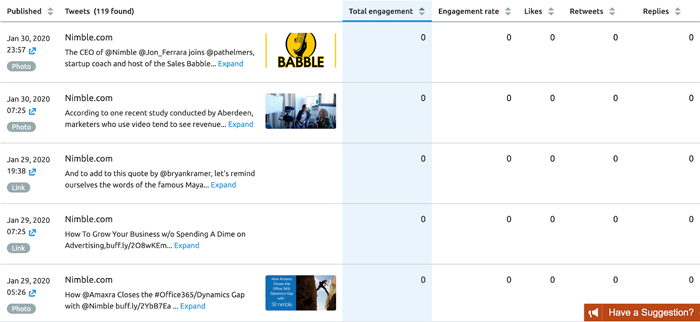
Zero engagement and pretty boring promo tweets.
What can you do instead?
The easiest way to start getting traction and thus leads across social media platforms is by teaming up with those who have already built their own community. They might be both brands and experts.
To make things happen, you need to start producing content that will involve them, and then you’ll have a legit reason to tag them in your SMM posts when you promote content that features them.
For example, one of my clients delivered a roundup post with tons of experts that generated more than 500 visitors within just a few days. Also, nearly 30% of those visitors converted to leads. Here’s the spike of traffic after the roundup was published:

Taking advantage of your social media presence can yield great results. And I am not the only one thinking that.
Here’s what Hugh Beaulac, a content and social media specialist at MC2 says on the power of Instagram:
The B2B niche is competitive, so marketers need to seek out new alternative ways for business promotion and lead generation. With over one billion active users, Instagram is a great place for finding new B2B clients even though it’s an underrated marketing tool for B2B companies.
Hugh Beaulac
Today, over 83% of users discover new products and services on Instagram, so building brand awareness is a must if you stay ahead of your competitors. The more people know about your business and service, the more potential customers you can acquire. To really make the most of social media, try sharing genuine stories and insights that your audience can connect with. This approach not only builds trust but can also lead to valuable Instagram and LinkedIn leads.
If any proof is needed, just take a look at Hubspot. The company uses Instagram to prove its niche expertise and educate people which helps to increase brand awareness and trust. As a result, followers are happy to give this service a try.
Content and social media specialist @ MC2
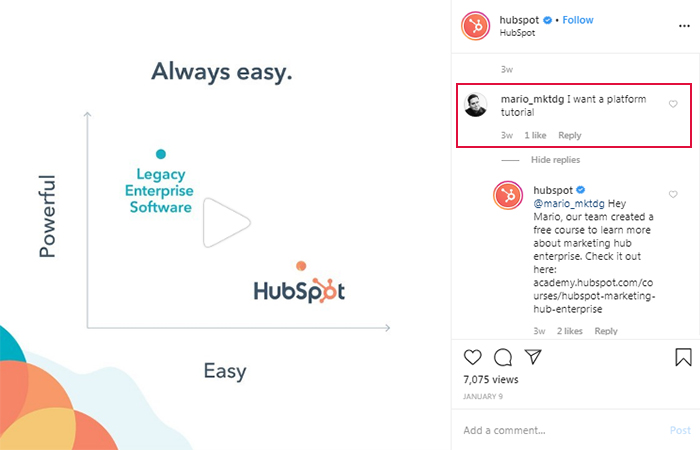
Referrals
Leads that are coming through referrals and recommendations are truly great as they already trust you! On top of this, a recent study delivered by Hubspot uncovered that 90% of agencies claim referrals as their top source for new leads.
Here’s how you could leverage referrals for generating more ready-to-act leads:
- Allow them to invite friends and be rewarded
- Encourage them to share their feedback by giving them something valuable in exchange. People are busy so before asking them to share how much they enjoy being your client, think about what you could provide them in return. There might be not only discount codes but also giving them a free starbucks or amazon card for a few bucks.
Example of Good Referral Marketing
Here’s an example of how Transferwise is using referral marketing.
They give 50 pounds to a user that invites a friend. Transferwise integrated this inside their main navigation menu to ensure that users won’t overlook this offer.
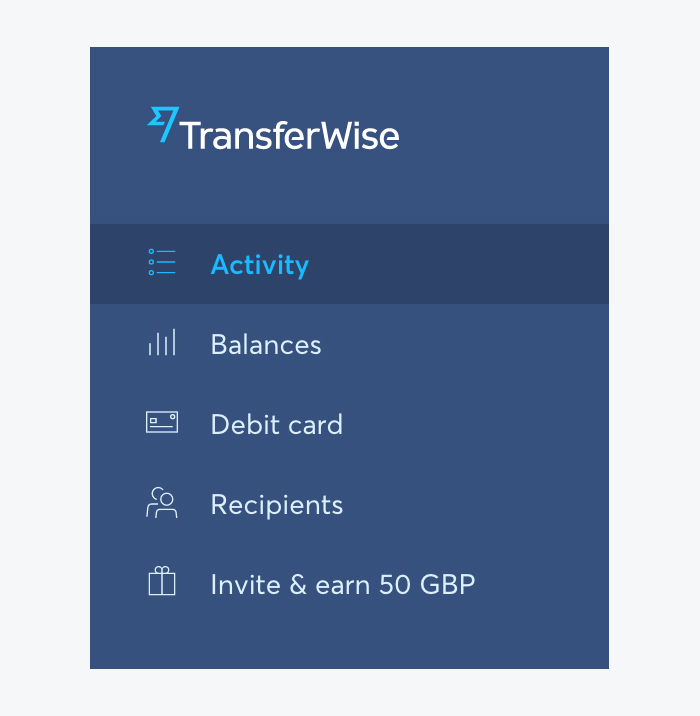
Influencer Marketing
Let’s not forget about the power of leveraging influencers in your niche for the purpose of generating more leads. Influencer marketing lets you collaborate with influencers (people who your prospects already trust) to create content that helps to drive more traffic to your website.
Zest.is, a content discovery platform, says that a big part of their success comes down to the good old word-of-mouth and influencer marketing. It worked like magic for them and yet the system put in place was quite simple.
Everyone wants to get their articles in front of as many eyeballs as possible and Zest provides this opportunity. Naturally, once the submitted articles started generating more traffic, blogs (including these run by influencers) were mentioning Zest.is as one of the best ways to distribute your content. Once influencers got the word out for Zest, their websites and user base began to grow exponentially.
There are several ways in which you can leverage the power of influencer marketing to your advantage.
For example, a company might ask an influencer to write a quick review of their product or service on Instagram. The influencer also adds a link in this review to a discount code that their followers can snap up. The review raises awareness of your brand, while the discount code incentivizes people to take a closer look at your offering.
Different Types of Lead Magnets (Companies’ Examples)
There is an abundance of lead generation tools out there, but in this article, we are only going to focus on a chosen few. Let’s take a look at the most effective lead magnets – see why and how they work, and which one is most suitable for your business.
Chatbots
Even though chatbots are obviously not considered lead magnets per se, they are powerful tools that deliver lead magnets to your website visitors and tempt them to get it the moment they arrive on your page.
Chatbots can offer your visitors multiple lead magnets in exchange for the email address, including discounts, ebooks, cheat sheets and so on. Below, we write more in detail about the kinds of powerful lead magnets that chatbots can deliver. Stay tuned to learn how to leverage that to your advantage and generate more leads right away!
What makes chatbots, such as the ones you can make with Tidio, so special is the fact that you can design a highly personalized lead generation experience for your website’s visitors. It’s possible to either use the ready-to-go chatbot templates or design different offers depending on the qualifying questions that you choose to ask when the chatbot engages your audience.
This is really important because customers want a more personalized experience online. If your chatbot understands customer requests and tailors its recommendations to them based on their wants and needs, your chances of generating more leads could improve markedly.
In the meantime, here’s a great example of how one of Tidio’s users is leveraging the power of chatbots to generate more leads for their business:
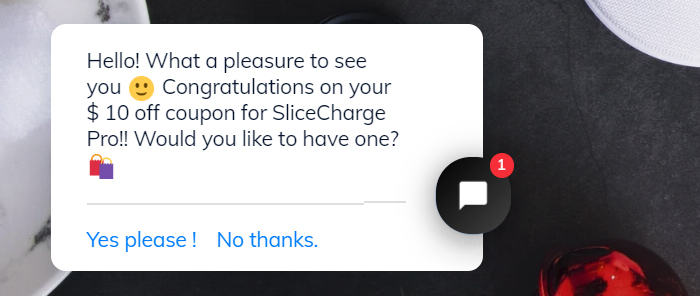
Are chatbots really so effective at generating leads? 68% of consumers now say that messaging is a great way to stay connected with businesses, while another report shows that 1 out of 5 customers say they’ll consider making a purchase that’s been recommended by a chatbot.
The numbers, then, suggest that using chatbots to increase leads is something worth exploring.
Dive deeper:
- How to Make a Chatbot in 10 Minutes – a Simple 3 Step Guide
- 12 Tricks to Generate Leads with Live Chat and Chatbots
- Conversational Landing Pages: Boost Conversion Rates by Engaging Leads Directly
- Conversational Marketing: from Traffic to Sales in 4 Steps
Free Tools and Trials
It was reported that GoToWebinar converted 40% of its free trial users into paid users. That’s quite a big percentage!
60%, however, is even better, which is what many companies manage to achieve.
There’s something about ‘FREE!’ that customers can’t seem to get enough. When it comes to lead generation, offering a free tool or a free trial could be just the ticket for your business if you want to raise more awareness and grab more data.
Free stuff works because it lets the end-user try your product/service/brand out risk-free. If they’re not sure about you yet, they can try you for free to test the waters. In other words, it lowers the friction of converting – customers who have tried your stuff for free, now have a clearer idea of what they’re going to get. Thus, the barriers for conversion are lowered (or removed entirely).
Take a look at how guys from Boot Camp Digital used Digital IG test to generate leads and achieve 97% email completion rate. A few words from the brilliant Krista Neher, the CEO.
We use a Digital IQ Test to generate leads. It strategically links to our business since we provide digital marketing training. We have an optional email opt-in and convert consistently at over 50% providing their email addresses.
Krista Neher
We promote the IQ test on our site and via social media. It also has social sharing built-in, which increases our reach.
We have also seen conversions to sales from this program consistently.
CEO @ Boot Camp Digital
Here’s how the lead magnet looks like:
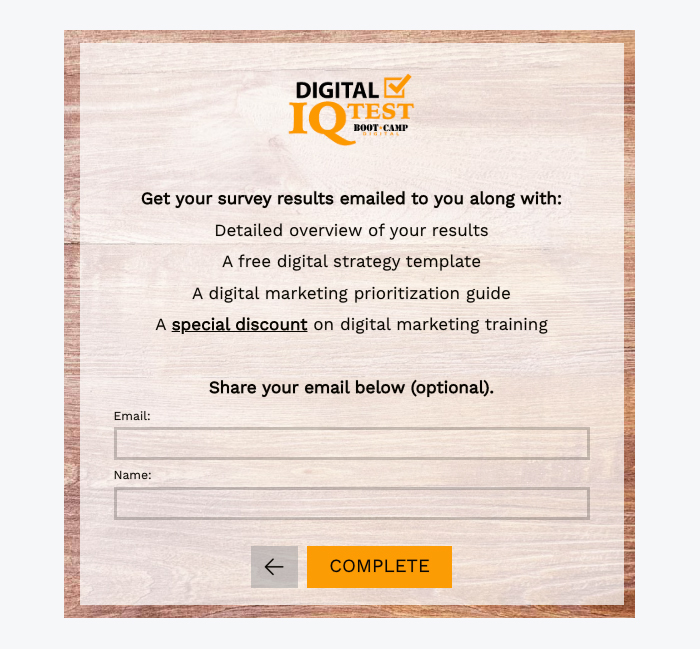
And here are the results:
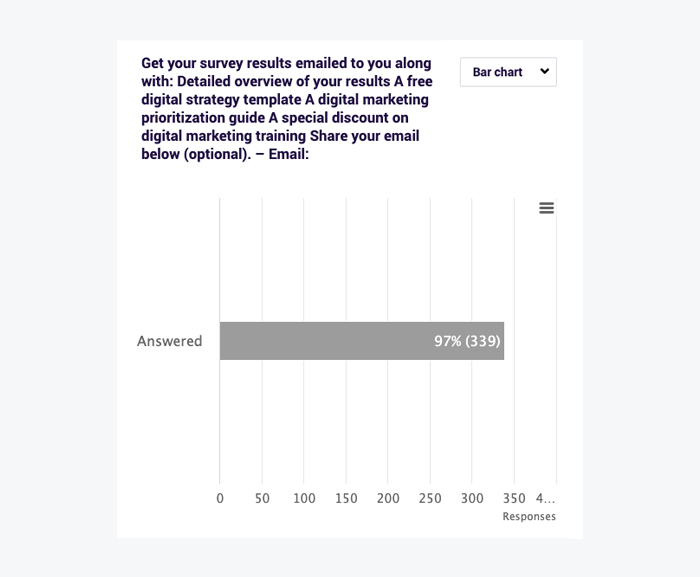
Pretty impressive, huh?
Through voluntary interaction with your target audience you add value by teaching them something new, and you generate qualified (bottom or middle of funnel) leads.
And the best thing about this lead magnet? Leaving an email is completely optional. It’s like trying to generate leads, without really trying or, god forbid, being pushy.
It’s a great example of leveraging the power of psychology, too. The lead magnet is so attractive because people truly care only about themselves – therefore finding out how smart they are is something that makes them trade it for their email address. Really brilliant!
All in all, free tools and trials work as lead magnets because of they:
- Help users to familiarise themselves with the products or services on offer
- Create transparency between the business and their customers
- Spread goodwill
- Allow the business to collect customer data which they can later use when it’s time to offer an upsell
Tidio is also on board with enabling interested customers-to-be a free trial, as well as, using the free version of the tool, forever.
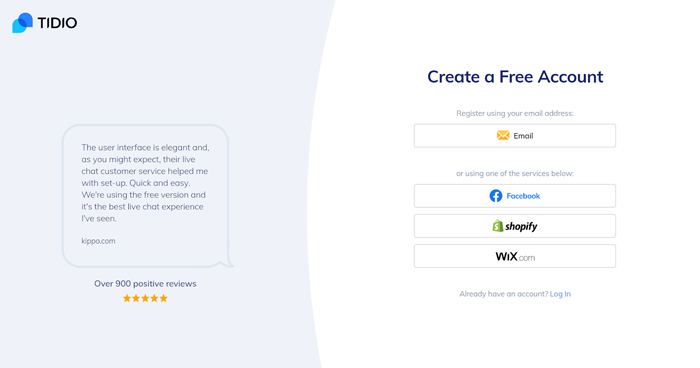
Obviously, the sign-up is only possible with an email address, hence the trade is made and people deciding to register become leads.
Gated Content
Companies produce gated content in order to collect customer info, such as email addresses. Ebooks, cheat sheets, webinars and so on work well as lead generators because of their perceived value; they are exclusive, value-packed pieces of content that go some way to solving the end user’s current problem.
And all the customer usually has to do is hand over their email address in order to get access.
Of course, handing over personal information such as their email address can make anyone a tad nervous. This is why gated content has to be super valuable. Essentially, the end-user has to feel that what they’re getting out of this deal is much more than what the business is getting.
As such, businesses that use gated content as lead magnets typically offer action-packed eBooks and cheat sheets.
Tidio took a step further and decided to create multiple gated content pieces to increase their chances of building a bigger email list and generating more leads. Producing various types of gated content targeted at different audience segments is a great strategy as it makes it easier to deliver a more personalized offering for all website visitors.
Here are the results for Tidio’s cheat sheets downloads:
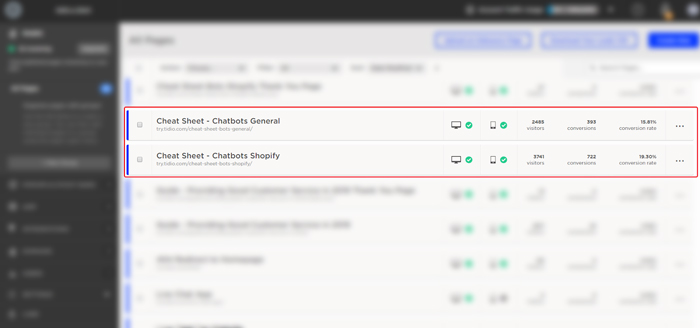
If you decide to produce a valuable, in-depth piece of content, the results can surprise you. Remember, lead generation is all about convincing prospects that are interested in what you have to offer, but who haven’t connected with you yet. If you can dangle a high-quality piece of content in front of your prospects, it could be the carrot they need to make that all-important connection with you.
Visme did exactly this with an outpouring of eBooks that contained so much value, they increased their leads by 150,000!
At Visme, we’ve put together 5 ebooks over the past couple of years, the latest one called “Marketing Strategies We Used to Bootstrap Visme to 4M Users.” which have collectively brought in over 150k new leads for us.
Bogdan Klopov
Head of Community Outreach @ Visme
Want to know how they did it and how you can replicate that?
Write about your experience. People are sick and tired of reading recycled material from other blogs. Write about what you did, what worked, what didn’t, and include screenshots to back it up. Once you do that, it automatically makes your content one of a kind. That’s something that is worth putting down contact information for and be interested in other things you’re doing (AKA your product/service).
Not bad, huh?
Email Courses
It’s no secret that online courses are still hugely popular. But instead of designing a full-blown online course, you can create a smaller email course instead. Essentially, this is a sequence of emails that you send to your leads once they decide to subscribe.
The word “course” adds a bit of hype, and your potential leads see much more value in signing up for a free course than simply subscribing to a newsletter.
The best part about email courses?
You put in your effort once, provide some useful tips and reap the benefits continually.
But what can your email course be about?
Anything that is related to your niche and which communicates some value. Email courses can be a real shot in the arm as they are able to generate you hundreds of leads and subsequent conversions
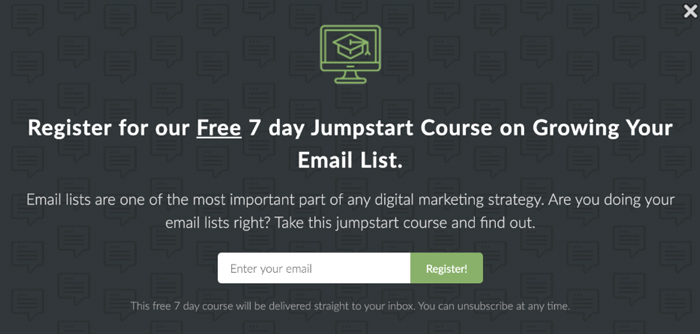
Take a look at Mailmunch and their email course success to understand what I’m talking about. They generated 400% more conversions with it! Here’s how:
The lead magnet we came up with was a free 7-Day Email List Building Course, that is delivered via email to our subscribers: one email every day. We used a simple opt-in form, placed on our blog home page. As soon as someone subscribed, we sent the first email automatically, and then one email each day for the next 6 days. Everything was automated using MailMunch Autoresponders.
Using this campaign, we got some tremendous results! We were able to increase our conversion rate by almost 400% over our previous lead capture forms. The lead magnet also proved its worth with some unheard-of open rates.
Ameeq Asrar
Our first email in the flow had a unique open rate of more than 42%!”
Product Manager @ Mailmunch

Pop-ups
Recent research by Sumo revealed that the average conversion rate of pop-ups is 3.09%. Depending on your current conversion rates, you should decide whether it’s something worth your effort or not.
However, it’s good to mention that 73% of internet users disapprove pop-ups and on top of this all, major browsers including Chrome have pre-built pop-up blockers. Not cool!
No matter how pop-ups might be frustrating from a user perspective, however, there are tons of businesses that are still using them to generate leads. Among them is the Coschedule blog that shows an exit pop-up with a set of templates that appear on their blog pages:
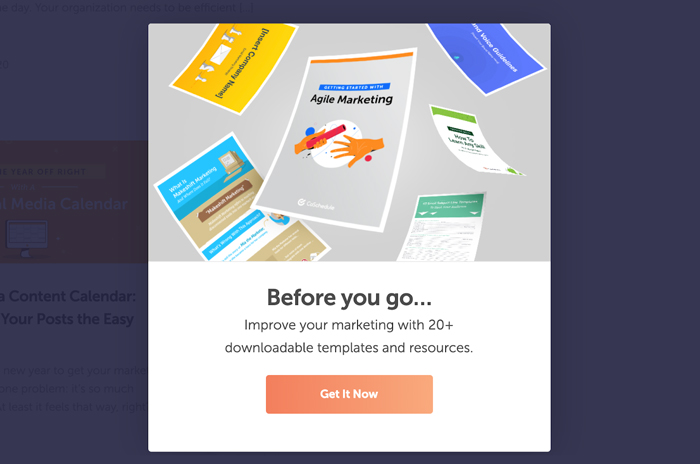
Another example is a pop-up that appears on the CXL blog which suggests leaving an email address to get free lessons on personalization:

The good news is that there are tons of tools out there that allow you to experiment with pop-ups without hiring a developer. Among them are Wisepops, Wishpond, OptiMonster and many others.
Still not convinced that pop-ups are for you?
Just take a look at the huge success of a single pop-up on the Bengu website. Here’s what Ahmad Benguesmia shared:
We use both “exit-intent” popups and modal popups to get people to join the newsletter.
We use Unbounce for the popups on the site.
One of the best performing pop-ups on the site is for a content upgrade PDF that reveals 17 little-known affiliate programs that pay up to $8k per sale. The modal pop-up for this post converts at 56% with over 9K conversions and 16K visitors.
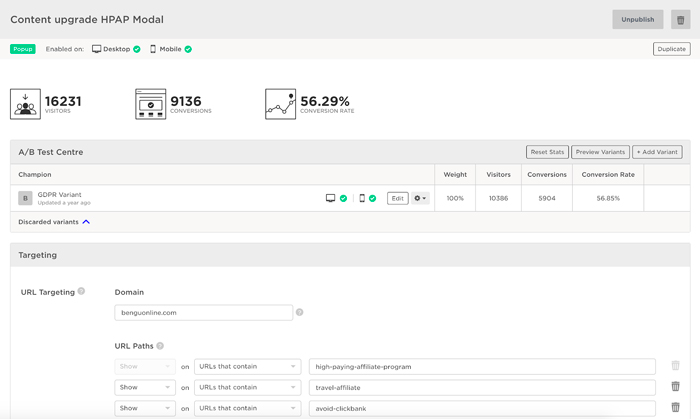
This popup appears when someone clicks a “download this PDF” type of link on the post. I have also included a screenshot of this as an example.
The exit-intent version of this popup picks up around 5% of visitors with 6.7K conversions and over 12K visits.
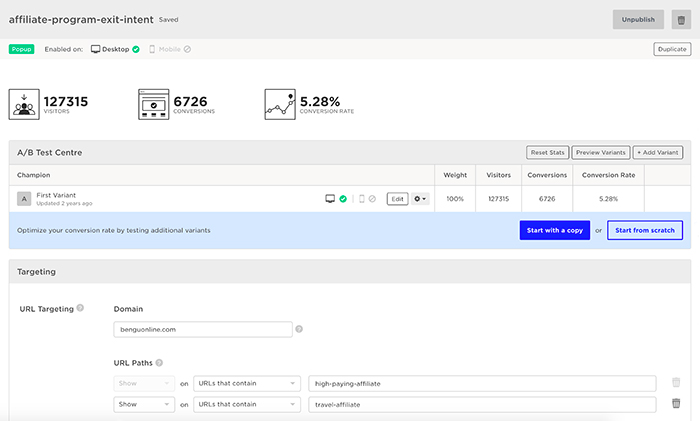
Just to put a cherry on top of the cake, you can see what Michał Leszczyński, a content marketing manager at GetResponse, shared about using pop-ups on their blog:
In the past, we used to show the same pop-up to everyone who viewed the content published on the GetResponse blog. The results weren’t spectacular – roughly around 1% of our readers signed up for our newsletter updates.
Since then, we started to target some of our pop-ups. We’ve got several variations going on right now. They feature the article’s author and refer to the topic the reader’s currently viewing.
Michał Leszczyński
Content marketing manager @ GetResponse
Results?
They get up to 7% conversion rates and haven’t even made changes to their newsletter. Still plenty of space for improvement, but now they see that this is the right direction.
Any of your doubts about pop-ups effectiveness should be gone by now 🙂
Dive deeper:
Webinars and Educational Courses
One more option you could use is one that the Hubspot blog used, where they offered users that were visiting a specific page the chance to learn more by subscribing to a free course:
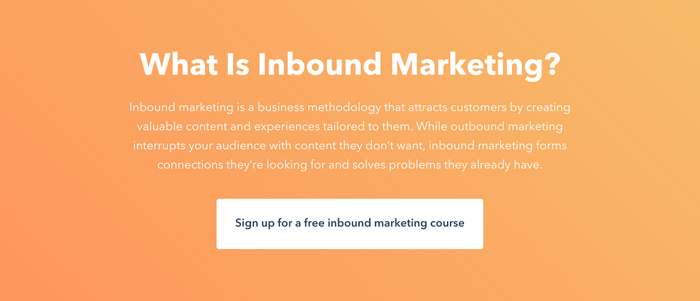
In fact, Hubspot page is a perfect example of how content pages that are getting tons of traffic can be turned into a lead generation source.
SEMrush reports that they get over 8k monthly users from Google:
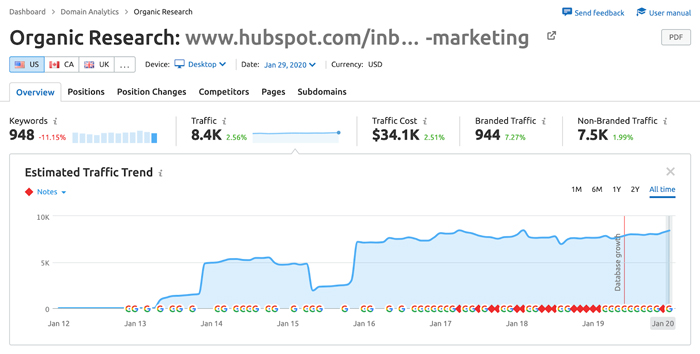
So, even if around 20% of users are leaving their emails to subscribers to a course, this means Hubspot receives only from this page nearly 2k leads.
Not bad, right?
How to Nurture Your Leads
Nurturing your leads is all about providing them continuous value. Why is nurturing them so important?
Because before a customer makes a purchase from you, they first enter into a relationship with you.
And as we know, a relationship is built on trust, value, and reciprocation.
This is exactly what lead nurturing allows you to do: By consistently delivering valuable, educational and helpful content to the end-user, you are building a relationship in which the customer begins to see you as the answer to their problems.
Email Marketing
One of the most common ones is to craft an exceptionally personalized newsletter which includes valuable insights for your email subscribers. Email marketing still works so well when it comes to building relationships with your customers, with 74% of them saying they want to stay in touch with brands via email.
Here’s what Vlad Calus from Planable shared with us about nurturing leads with email marketing.
For our Christmas campaign, we’ve created an Advent Calendar for marketers. For 24 days, users received a new gift guaranteed every day. All they had to do was to come back to the landing page and submit their email, so they can send the gift to their inbox.
Vlad Calus
Each day, we offered a new free piece of content and a generous discount from one of our 24 partners that agreed to play Santa’s role.
Needless to say, we invested less than 10 hours of effort and collected over 700 leads. We used Personizely widgets connected to automated campaigns in Sendgrid.
Co-Founder @ Planable
Here are the results:
Dive deeper
Community Building
Another great way for keeping your leads nurtured and getting them ready to buy from you is to include them in your community. Everybody likes to feel like an insider!
Communities are free to build and you can use platforms such as Facebook or Slack to create your own. It’s a great way to familiarize your leads with your product and to build trust in the line company-user.
A good example of a community building is Tidio’s Facebook Group (feel welcome to join!).
As the description says its purpose is “to provide a safe and friendly place for Tidio users to connect and share their knowledge about Bots, Automations, and live chat”.
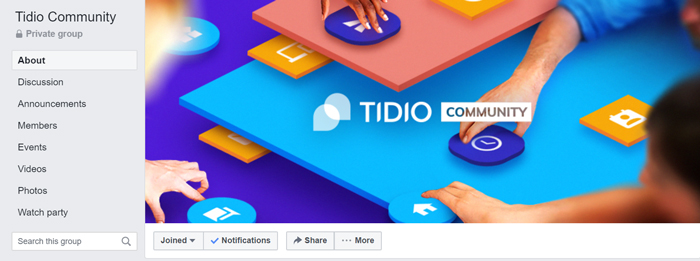
It’s also a great opportunity to keep your leads engaged and curious about your products. Building a genuinely helpful community is a fool-proof way of pushing your leads down the sales funnel, too!
Reviewing and Adjusting Your Lead Generation Strategy
No one wants to spend their resources and money on attracting the WRONG type of leads. To avoid a situation where you have tons of leads and near to zero conversion rates, you need to constantly review your lead generation channels and get rid of those that are not working well.
How to spot those channels?
Here’s a list of metrics that you need to focus on:
- Cost per acquired lead (even if a lead source is free you still can try to estimate the number of hours you spent to generate XYZ leads)
- Conversion rate to a client (this metric we need to spot those lead gen campaigns that are performing below an average)
- The revenue that is associated with each campaign
Once you have all those metrics, you could easily filter out those that are bringing you too expensive or too cold leads.
Finally, there are some situations when you want to get more in-depth info on how exactly users are interacting with your website, including what buttons they’re clicking, how they’re consuming your content and so on.
And what’s even more important is to see it as a part of your lead generation campaign. This data could help you understand whether users find your landing pages engaging or not. All mentioned above and much more can be done with the help of a web analytics tool that is called Finteza.
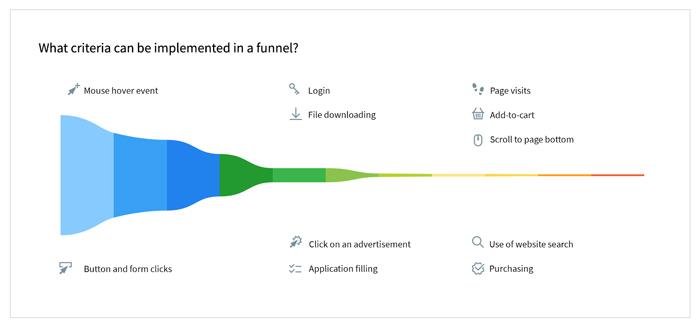
Conclusion
Lead generation cannot be underestimated. It means more traffic and thus potentially more customers and sales.
Use the tactics highlighted in this article to up your lead generation game. Shift the focus to valuable content, work hard at building relationships with your prospects and be creative with what you offer them.
The idea is to show them that you – and no one else – have the solutions they need.

